You finally have the horse property of your dreams. But after the keys are handed over and the bottle of champagne is long gone, the reality of caring for the pastures, stalls, and paddocks sets in. Pastures need mowing; manure has to be piled, spread, or dumped; the hard arena ground needs conditioning. It doesn’t take long to realize that a wheelbarrow and hand tools simply aren’t adequate for so many of the jobs you’d like to get done.
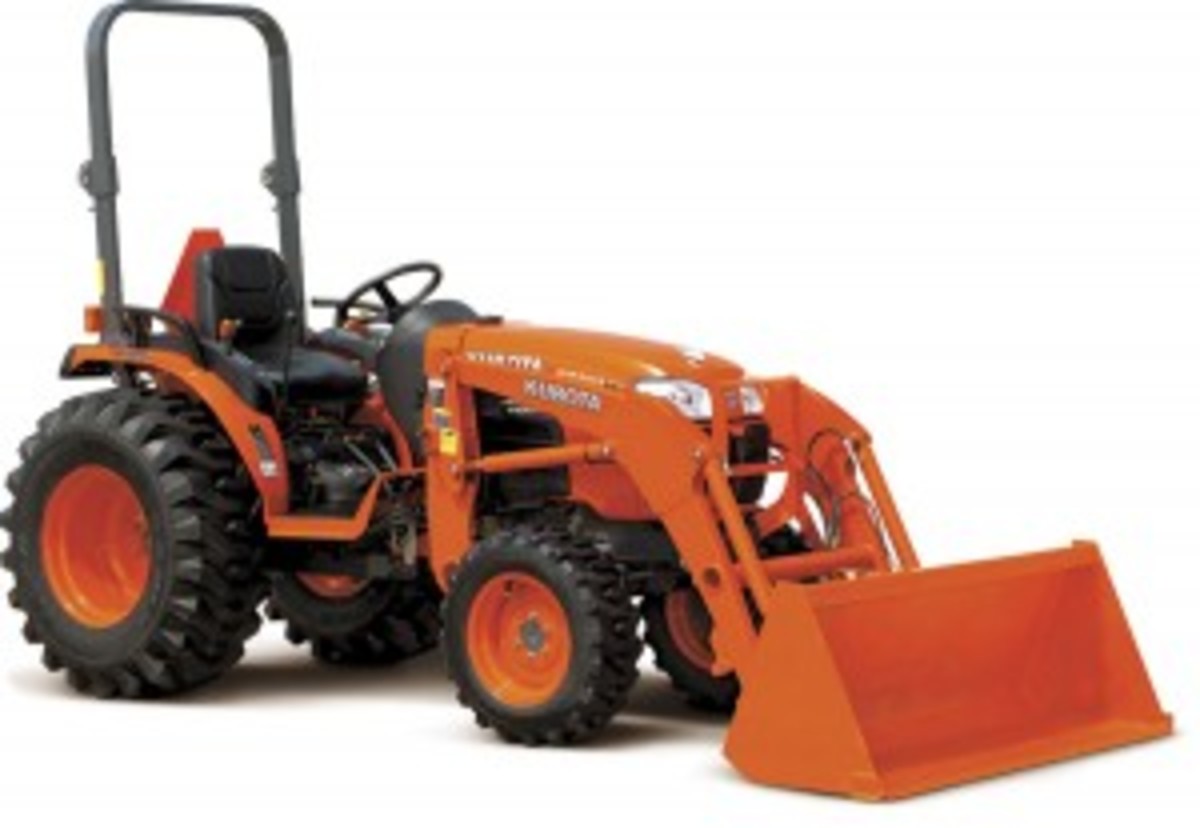
So, you’re considering that staple of rural life: a tractor. Perhaps you’ve collected brochures or searched the Internet for information. Either way, today’s tractor market can seem daunting. There are dozens of manufacturers, both domestic and foreign, each with many models and a dizzying array of options. It’s enough to make a veteran farmer’s head spin, not to mention that of a refugee from the suburbs who’s setting up a horse property.
Fret not. We’ve already plowed the field for you, researching today’s small-tractor market to create this “field guide to farm power.” Use it to narrow down the choices and find the machine (and the implements) you’ll need to get your farm chores under control.
Tractor Essentials
Choosing a tractor depends mainly on your work requirements. Power, measured in horsepower, is the essential determining factor in what size implements you can use, the type of work you can do, how much work you can accomplish, and how quickly. As a rule of thumb, the more horsepower a tractor has, the larger in size it is. In some cases, less is more; a smaller tractor is more nimble and better able to fit in tight spaces. But, when it comes to getting heavy work accomplished, a larger tractor with more horsepower could be required.
Tractors, therefore, come in a variety of power classes, from small garden tractors, suitable for mowing large suburban lawns, all the way up to huge farm tractors, capable of plowing vast acreages. Most horse owners, however, find one class of tractor most suitable to their needs: compact utility tractors.
Compact vs. Larger Tractors
Compact utility tractors generally come with 3- or 4-cylinder diesel power plants, rated from 18 to 45 horsepower. As the name implies, these tractors are narrow, short, and relatively light. Their short turning radiuses make them ideal for barn work and paddock cleaning. Compact tractors are suitable for mowing pastures up to about 10 acres, light landscaping, arena grooming, hauling moderate loads, spreading manure, and clearing snow. New, these workhorses range in price between $10,000 and $30,000.
Compact tractors suit nearly every horse owner’s requirements, so long as they’re not pressed into duty harvesting hay, tilling fields, or clearing land. If you’re setting up a commercial stable or plan to harvest hay off your property, you may need to consider a compact tractor on the higher end of the power scale or an even larger utility-sized tractor.
Larger utility tractors vary in power from 40 to 80 horsepower, and are well-suited to big commercial horse stables, hobby farms, small cattle operations, and the like. They’re sufficiently large and powerful to handle field work such as hay swathing, baling, and hauling, and can be used for crops, excavation, road clearing, construction, and other heavy-duty tasks. Prices start at about $20,000 and climb to $50,000 or more.
Putting Power to Dirt
Different transmission systems are used to deliver engine power to a tractor’s drive wheels. Once you’ve narrowed your choice down to either a compact or larger utility tractor, you’ll want to consider transmission types.
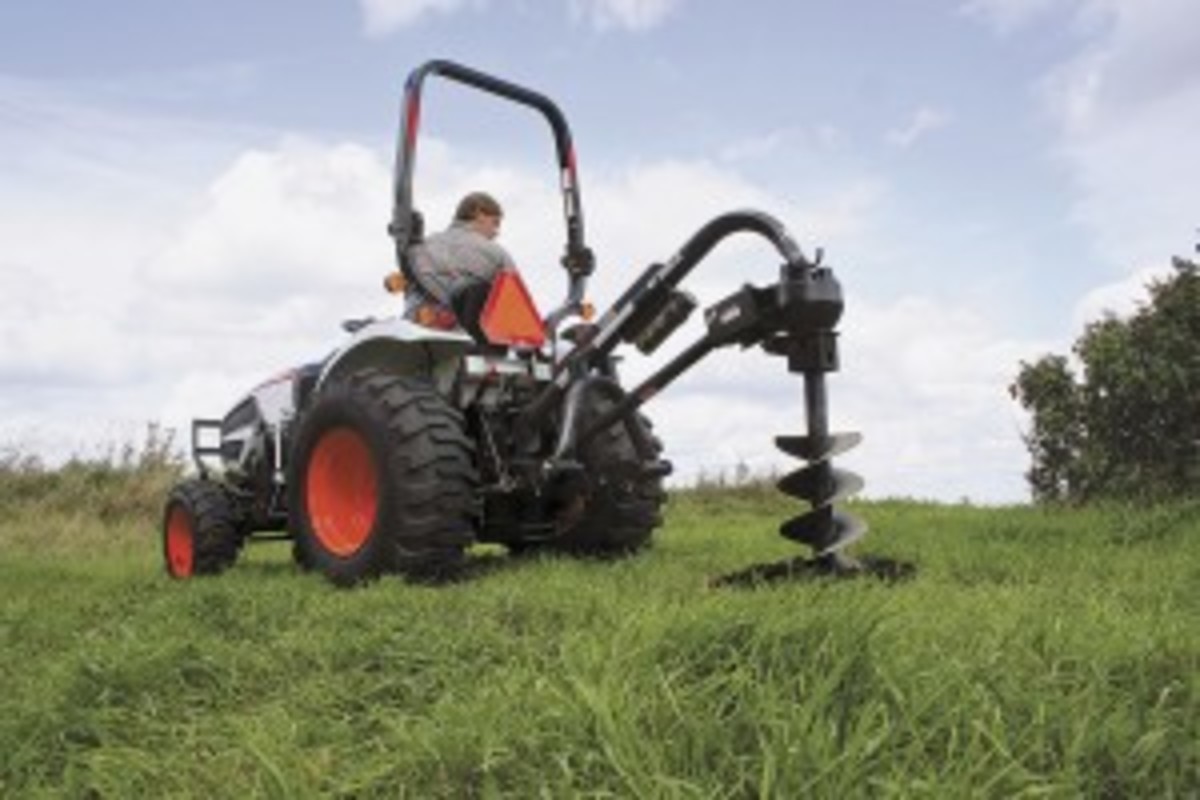
Four-wheel-drive tractors make up about 90 percent of all new compact and utility tractor sales. Power-assisted front wheels on a tractor are popular for the same reason they’re found on many of today’s trucks and SUVs: Compared to tractors without four-wheel drive, they provide better traction on ice, snow, and hills and in mud. The extra front-axle weight provides more ballast and more even weight distribution than with rear-wheel-drive models.
However, four-wheel-drive systems generally add thousands of dollars to the purchase price. Fortunately, the expense can be recouped, as this option adds greatly to a tractor’s resale value.
Do you need it? If traction isn’t critical to your work (say you’ll mostly be doing arena preparation and working in barns and level paddocks), you may wish to forgo the expense of four-wheel drive. If, however, you aim to clear some land, move snow and ice from drives and paddocks, or work in muddy conditions or on slopes, you’ll value the four-wheel-drive feature.
If you do purchase a rear-wheel-drive-only tractor, check to see if it has a feature called a differential lock. This is a gear that locks both wheels together, making it easier to get out of sticky situations. You can also add tractor-tire chains for added traction on slippery surfaces.
Another choice you’ll face is whether to buy a gear-driven transmission or a hydrostatic transmission. A gear-driven transmission is much like a manual transmission in a car; it’s connected to the engine via a clutch. Its main advantage comes in its range of gear ratios (up to 16) and ability to handle heavier loads relative to the hydrostatic types.
Hydrostatic transmissions (sometimes designated by the acronym HST) are similar to automatic car transmissions. These offer stepless adjustment of speed, torque, and power, making it easy, for instance, to change speed while dragging an arena or mowing a pasture. Hydrostatic transmissions also make it easy to rapidly shuttle between forward and reverse?helpful when doing repetitive back-and-forth chores such as paddock cleaning. Hydrostatic transmissions also tend to require less maintenance, but repair costs can be much higher than with gear-driven transmissions. If convenience and ease of operation are your goals, you’ll probably prefer this type of drive.
Putting Power to Tools
Some tractor implements, such as post-hole augers, “brush hog” field mowers, and some tillers, require power supplied by the tractor. This is supplied by a “power takeoff,” commonly called a PTO. PTOs are typically located at the rear of the tractor. Many compact tractors also offer mid-mount PTOs underneath the engine; these typically power mowing devices such as “finish” mowers for landscaped lawns.
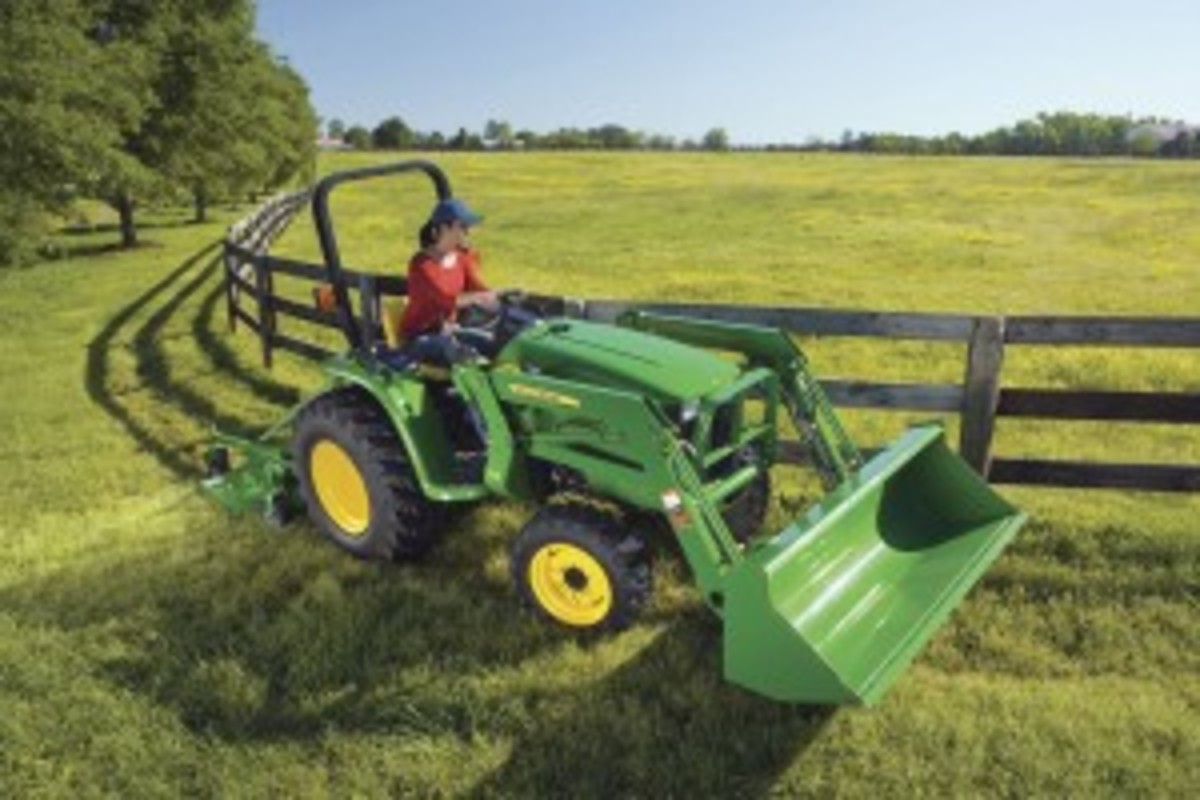
Another advantage of hydrostatic transmissions (see above section) is that they typically power “live” PTOs and the related “independent” PTOs.
With standard PTOs, the implement drive shaft is coupled directly to the tractor transmission, making the PTO’s speed dependent on the tractor’s speed. A live PTO is independent of the tractor speed; it’s cotrolled by a clutch that can be engaged and disengaged when power is needed for the tool. What this means is that a mower, for instance, will maintain a constant speed, even when you’re slowing down and changing direction.
Finally, a variation on the live PTO is the independent PTO; this is similar to a live PTO in that it operates independently of the tractor’s drive speed. However, this PTO has its own separate clutch that’s not tied into the transmission of the tractor itself.
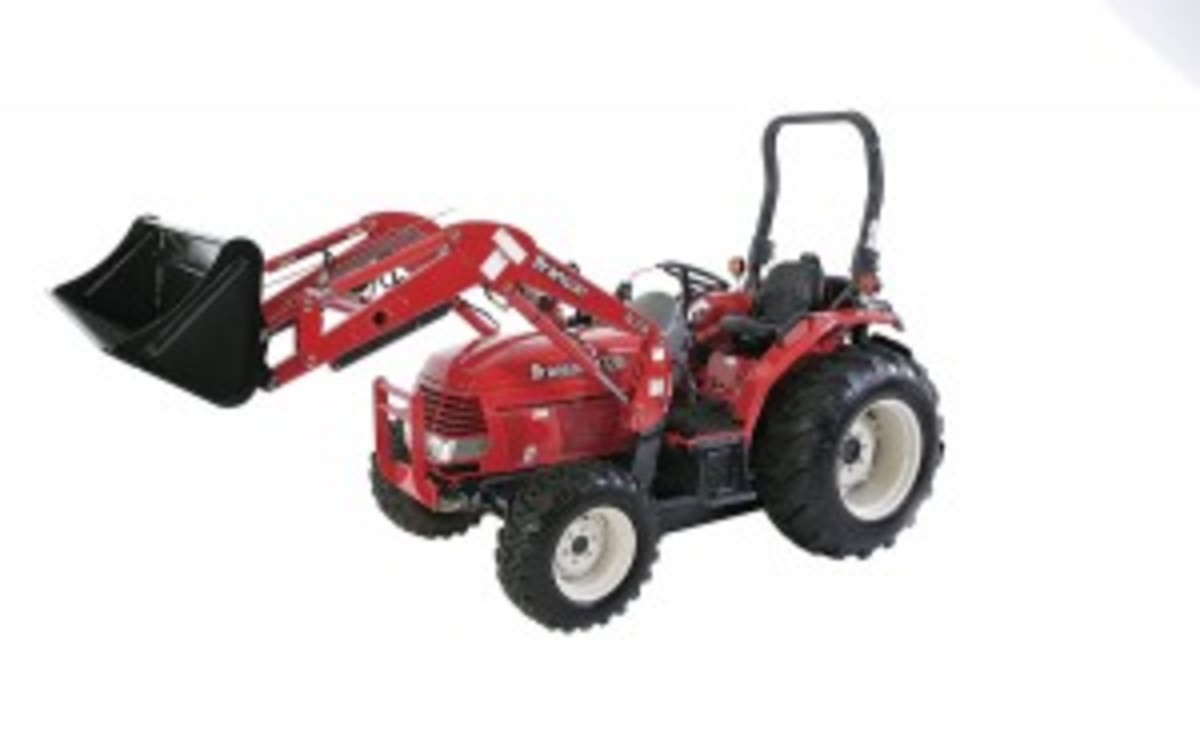
Choosing one PTO over another depends largely on the implements used and the work you’ll be doing. It’s best to discuss your own work requirements with a salesman when considering which PTO is the best match for your needs.
Other Considerations
Power steering. Hydraulic power steering is optional with many compact tractors and just about standard on new utility tractors. Power-assisted steering makes working in tight spaces easier, but also adds to the cost of the machine?anywhere from $500 to $1,000. Still, unless you enjoy strong-arming a piece of machinery, you’ll appreciate the ease and convenience of power steering. It’ll also add resale value to your purchase.
Hitch types. Bar hitches are common to tractors; these are simply steel bars that attach to the tractor frame and allow you to pull a variety of implements. Unless your needs are very basic, you’ll want to consider the common three-point hydraulic-assisted hitch. These types have segmented arms that can raise or lower implements and maintain more consistent loading for such jobs as arena work. Three-point hitches are necessary for many attachments, including post-hole augers, rotary mowers, and most blades. A three-point hitch will add $800 to $1,000 to a tractor’s price.
Hitches are rated by their lifting capacity and size. Compact tractors have Category I hitches, while larger utility tractors may have Category I or Category II hitches, which can accommodate larger implements such as 7-foot scraper blades for clearing roads. While some Category I implements can be fitted to Category II hitches, you can’t use the larger Category II implements with the smaller Category I hitches.
Attachments
As one tractor salesman sagely notes, “A tractor without attachments is a slow ride to the mailbox.”
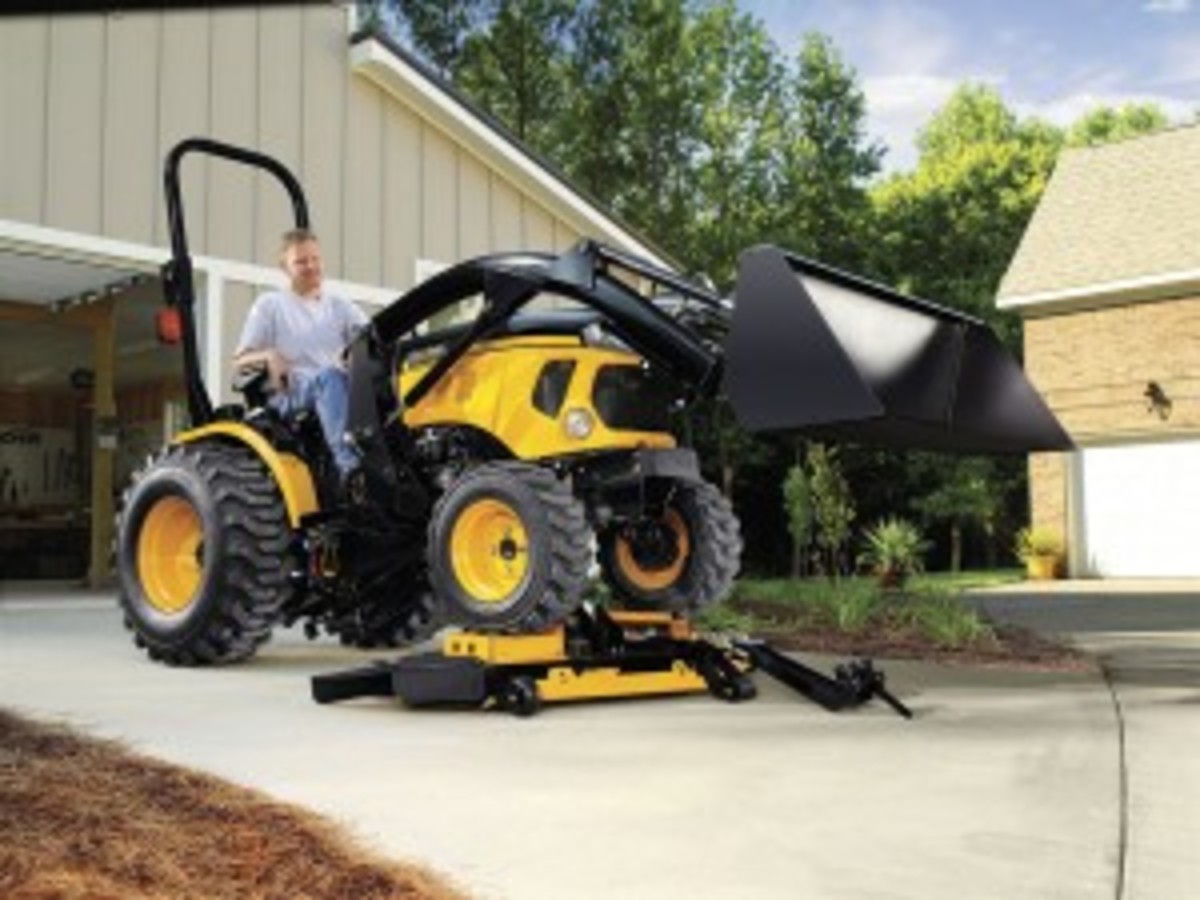
Any competent tractor salesman will ask about the work you plan to do and help you choose the right size model and implements for the work. In determining the size of tractor implements to buy, it’ll help you greatly if you measure such things as paddock-gate and barn-door openings, alleyways, and other common entry and exit points on your property.
Discuss with your dealer the work you’ll be doing, the terrain you’ll be working on, and the ground conditions with which you’ll contend. Be assured, there are no ignorant questions!
Standard implements useful for horse people include a front loader for paddock and arena cleaning or resurfacing, and for carrying loads; a rear blade for dirt-road grading and snow removal; and a manure spreader (if you have fields in which to disperse manure). A dump cart is especially useful for handling manure and landscaping and gardening materials, moving hay and feed, and other hauling duties.
For arenas, many products exist for conditioning the ground footing. Some horsemen use several tools, including rakes, discs, and chain harrows, to work their arenas. However, a multi-purpose product can condition an arena in one pass, and for many, is worth the investment.
Other tools may be more specific to a particular job; post-hole augers, for example, facilitate building a barn, paddocks, or a fence. Fortunately, you don’t have to own every tool for every job. If you plan to do a particular job only once, or only on occasion, you’ll want to discuss renting such tools with your tractor dealers or with local third-party rental companies.
Dealing With Dealers
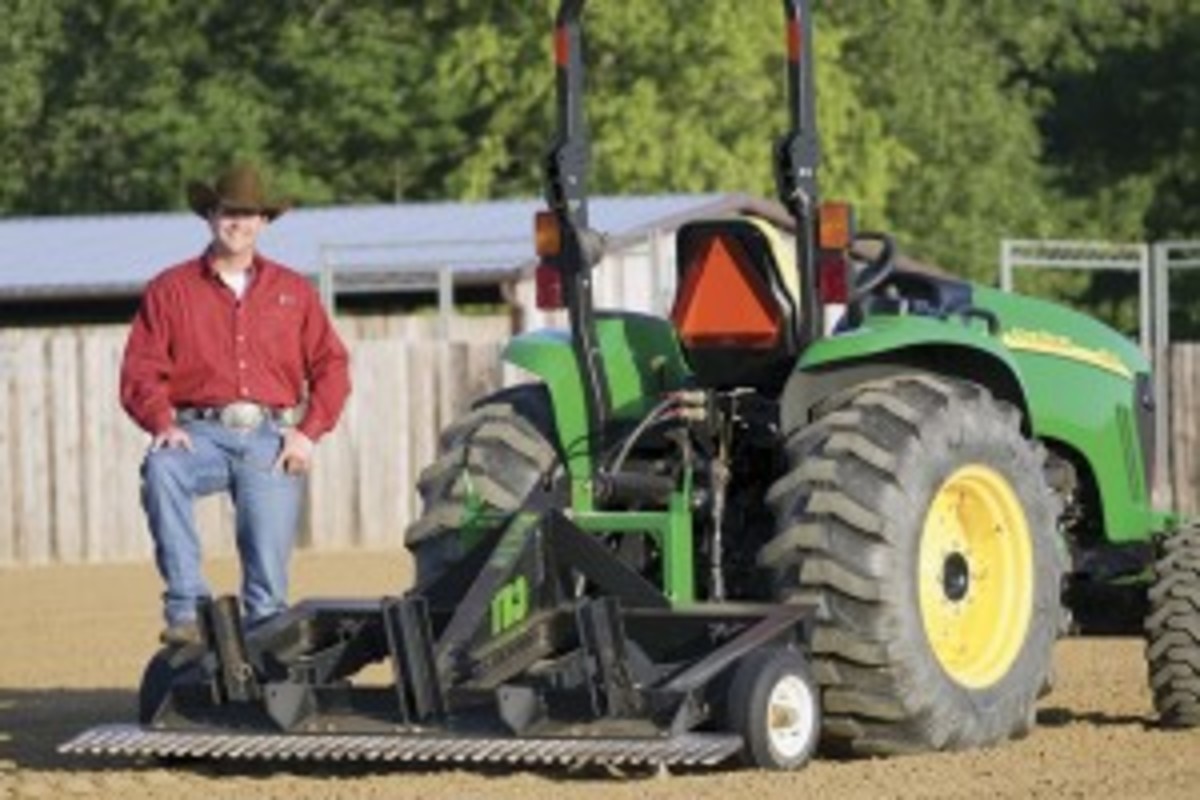
A few final words on tractors. After speaking with numerous dealers, it’s clear that the most common reason cited for resale of tractors is customers who bought too little, or too much, tractor in the first place.
You’ll do yourself a huge favor by having a list of key info in hand before you arrive at a dealership or attempt to buy online. Include information about the size and special conditions of your property; the work you plan to do; and the clearances of doorways, gateways, etc. to help a dealer find you the just-right model. As with autos, most dealerships also help with financing directly from the manufacturers they represent, or through local banks and other lenders.
Some dealerships also offer instructional classes to help familiarize buyers with the safe operations of the equipment. At the very least, a dealer should spend the time necessary to show you how to safely operate the equipment you’re buying.
Dealerships are also the key sources for parts, attachments, repairs, and regular service. Inquire about service contracts that cover regular maintenance performed on a schedule. Ask if the service work can be performed at your property or if pickup and delivery are available.
Having a reliable local dealer could be more critical to your tractor purchase than models and features you find on the Internet. Shop the manufacturers available locally, whenever possible, so that you’re assured of getting quality service, repair work, and advice throughout the life of your machine.
Foreign-made tractors are a large part of the industry in North America today; in addition to American-based manufacturers, there are now many Asian and even some Eastern European-based tractor makers in the market. Some of these foreign-made tractors are “gray market” imports brought into the country without manufacturer consent. They aren’t necessarily covered by the full warranties available for tractors built and imported specifically for the North American/U.S. market.
Further, these gray-market tractors sometimes lack many of the safety features required of tractors authorized for sale in North America. Be sure when buying a tractor that you’re getting a full North American/U.S. warranty and the safety features that’ll protect you, the tractor operator, and your equipment investment.






